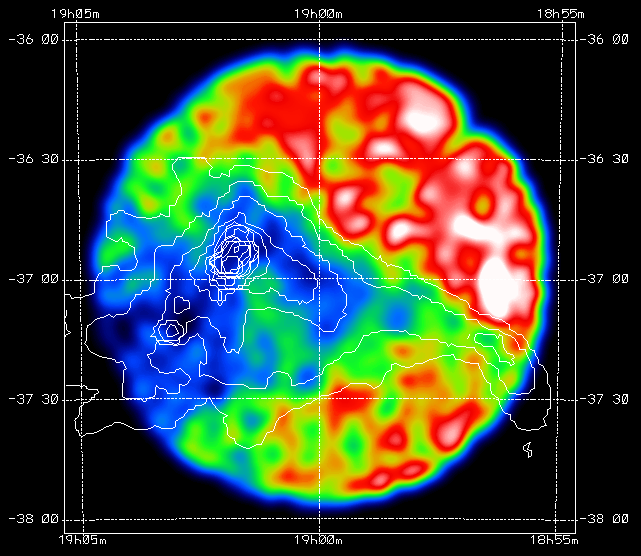Corona Australis dark cloud

These images show ROSAT PSPC false-color images of the Corona Australis dark cloud. The contours show the 100 micron emission from dust in this cloud as measured by the infrared IRAS satellite. The image shown above was made from X-rays with energies between 100 eV and 300 eV (C band), while the image shown below was made from X-rays with energies 500 - 1100 eV (M band). These soft (low energy) X-rays are absorbed by interstellar dust and gas. Because the M band X-rays are more penetrating than the C band X-rays, they are absorbed more strongly in the core of the cloud than in the periphery, while the C band X-rays from beyond the cloud are completely absorbed over the entire cloud. The relative intensity of the C band emission on and off the cloud is a measure of the fraction of the emission in this band that comes from behind the absorbing cloud. Soft X-ray "shadows" like this are the X-ray analog of well-known optical dark nebulae such as the Horsehead Nebula, produced by absorption in a dark cloud of optical photons emitted in a bright nebula behind the cloud. In the X-ray case, the entire sky is bright with a diffuse glow known as the diffuse X-ray background (somewhat like the night sky as seen from a modern city, where scattered light from street lamps produces a bright glow in the sky and washes out all but the brightest stars).

This work was done by Dr. Gordon Garmire and graduate student Jeff Mendenhall of the Penn State Department of Astronomy & Astrophysics.
![]() Link to Dr. David Burrows'
X-ray shadows page.
Link to Dr. David Burrows'
X-ray shadows page.
Curator:
HEASARC Guest Observer Facility
Please use the Feedback link if you have questions on ROSAT.

